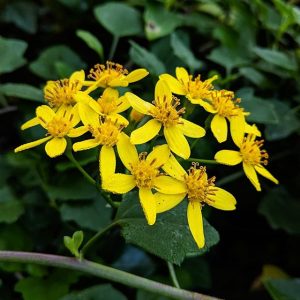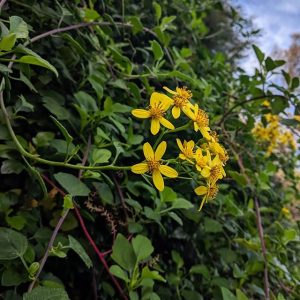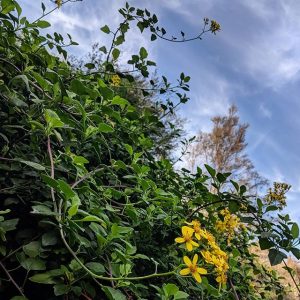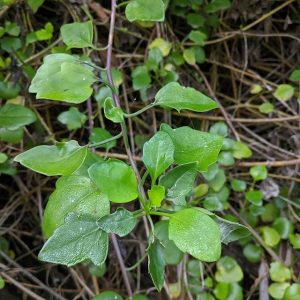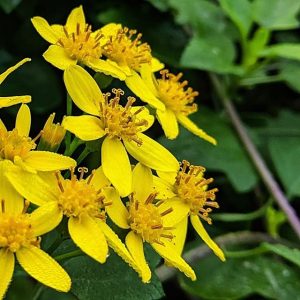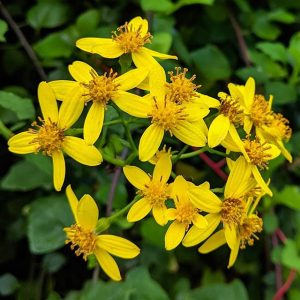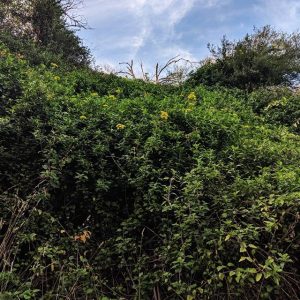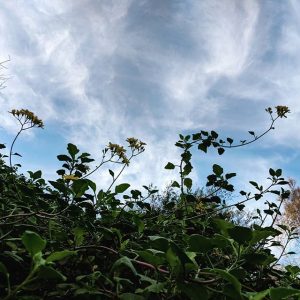Climbing Groundsel (Senecio angulatus), another winter-flowering climbing aster from Southern Africa.
Climbing varieties like this one were likely included in early horticultural imports of unidentified Senecio species to the colony. There are also anecdotal reports that the species was brought back from South Africa by returning soldiers of the Boer War. In Queensland, S. angulatus may have enjoyed a surge of popularity following that conflict, reflected in garden columns in Brisbane newspapers (1906-1910) which praised the species for the handsomeness of both its foliage and its clear, bright yellow masses of flowers. However, these accounts may have also incorrectly applied the S. angulatus name to Senecio tamoides, which became a more prevalent weed on the east coast around that time.
Climbing Groundsel was first collected as a weed in Victoria at Mornington in 1936, and showed up in newspaper column submissions from inland sites between Bendigo and Swan Hill in the 1940s and 1950s, areas where it has never been formally collected. In the metropolitan, it is established on coastal bluffs and the decomposed rock gullies of suburban Melbourne creeks, where the plants form dense arcing stands of stems each up to 5 metres in height.
The photographed plants were on Darebin Creek, on a very weedy near-vertical exposure adjacent to several patches of succulents, including an impressive stand of Aeonium (due to flower any day now, wait for it).
View Original Post on Instagram
Search for information about Senecio angulatus in the Flora of Victoria
View information and occurrences of Senecio angulatus on the Atlas of Living Australia

